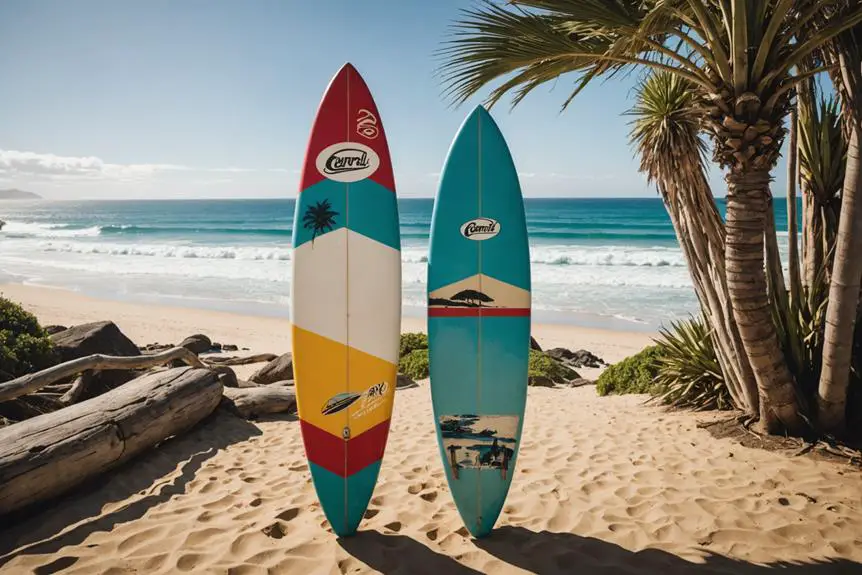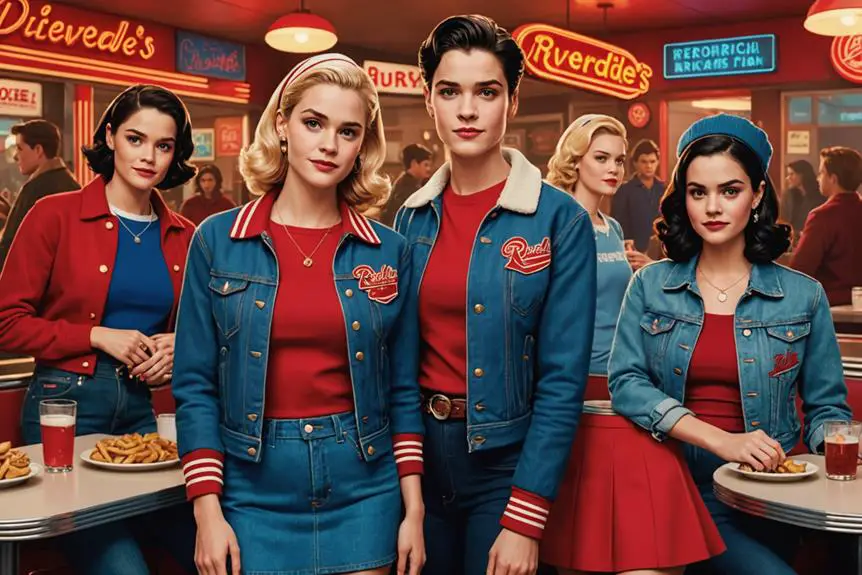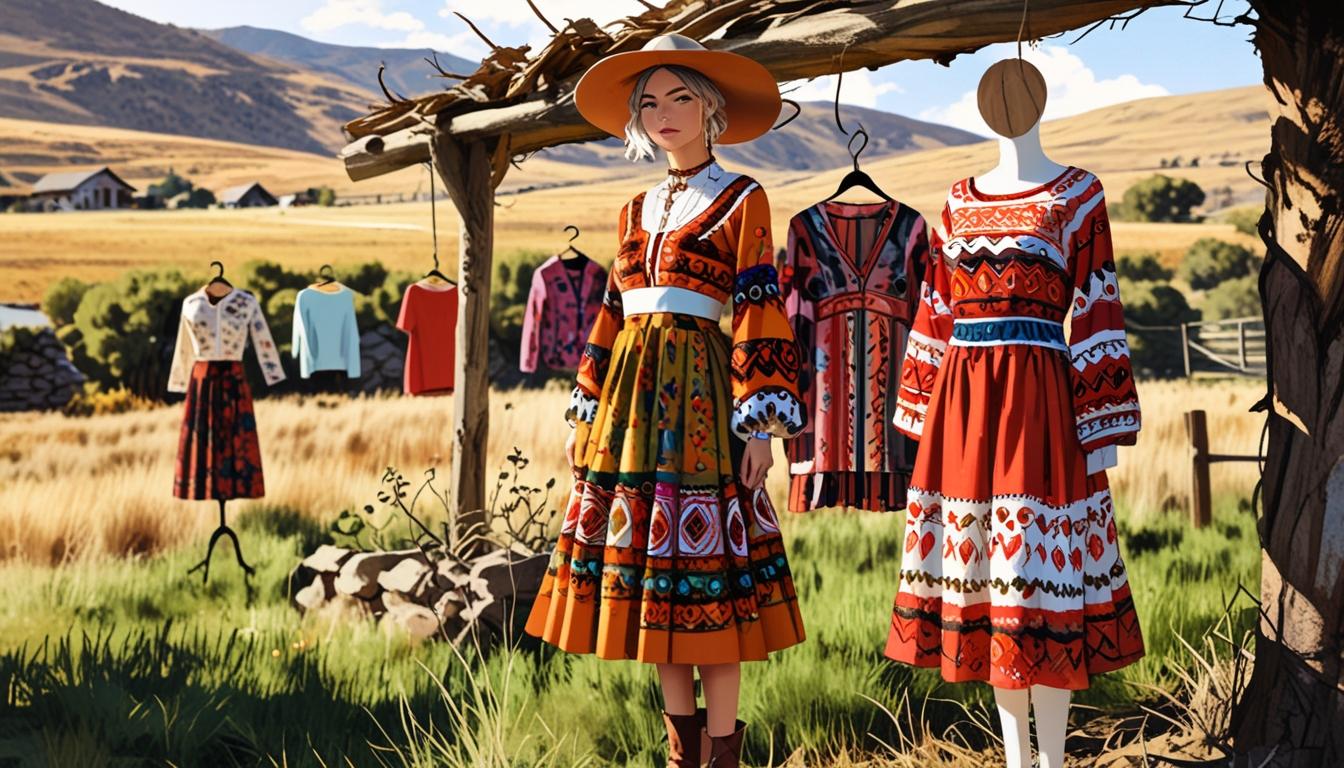Rip Curl began its journey in 1969 in Torquay, Australia, founded by Doug Warbrick and Brian Singer, initially focusing on surfwear. The brand rapidly expanded, introducing a range of stylish wetsuits and surf apparel. In the 1990s, they launched "The Search" campaign, inspiring individuals to embrace unique experiences through fashion. Their dedication to quality and design has garnered numerous accolades, including multiple SIMA recognitions. Over the years, they've collaborated with prominent athletes like Tom Curren and Mick Fanning, significantly influencing surf culture and fashion. Today, Rip Curl remains committed to innovation and community engagement, continually shaping trends within the surfing lifestyle. Interested in discovering how they've further impacted the fashion world? There's a wealth of information about their contributions to the industry.
Origins of Rip Curl
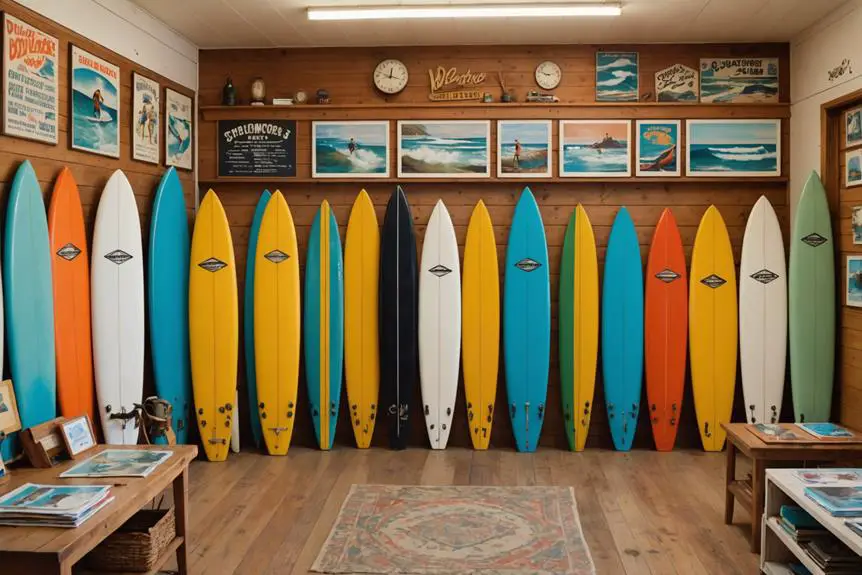
Rip Curl's origins trace back to 1969, when Doug Warbrick and Brian Singer launched the company in Torquay, Victoria, Australia, initially focusing on surfboard production. The name "Rip Curl" was inspired by a surfboard label called "Rip Curl Hot Dog," conceived during brainstorming sessions with local surfers, showcasing the brand's deep connection to surf culture.
Starting in a garage, Doug shaped surfboards while Brian handled sanding and fin creation, embodying the spirit of grassroots entrepreneurship. As demand grew, they relocated to the Old Torquay Bakery in November 1969, allowing them to greatly increase production capacity. This move marked a turning point for Rip Curl, as they began to establish themselves as a key player in the surf industry.
In December 1969, Alan Green joined the team, which led to an expansion of Rip Curl's product line to include wetsuits. This pivotal moment not only diversified their offerings but also solidified their reputation for innovation and quality in the surfing world. With each step, Rip Curl was shaping its identity, evolving from a small surfboard operation to a brand that would soon become synonymous with surfing excellence.
The Search Campaign
Building on its roots in surf culture and innovation, the "Search" campaign launched in 1992 embodies the adventurous spirit that defines surfing. This campaign encourages you to seek uncrowded waves and unique surf experiences, highlighting the thrill of exploration. Through a series of enthralling surf films by Sonny Miller, including "The Search" (1992), "The Search II" (1993), and "Beyond the Boundaries: The Search III" (1994), Rip Curl redefined surf filmmaking.
One standout film, "Searching for Tom Curren," released in 1996, won Video of the Year by Surfer magazine in 1997, showcasing the campaign's significant impact on surf culture. In 2015, the "Search" campaign was relaunched, continuing to inspire new generations of surfers to embrace adventure and explore the world's hidden surf spots.
The essence of "The Search" has influenced Rip Curl's product development, athlete sponsorship, and events, making it a central element of the brand's identity. It's not just about riding waves; it's about the journey and the adventures waiting for you, reminding every surfer that the next great experience is always just a search away.
Awards and Recognition
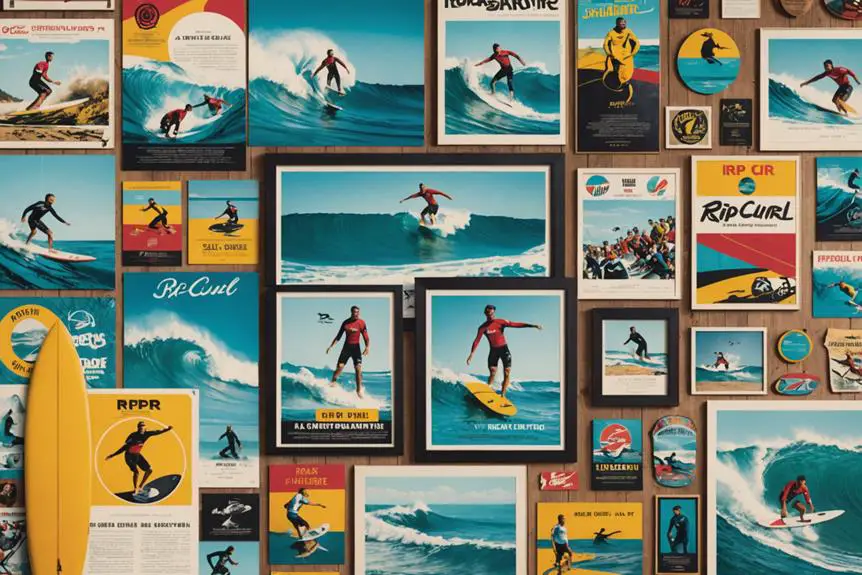
Recognition in the surfing industry speaks volumes about a brand's commitment to excellence, and Rip Curl has consistently earned its place at the forefront. Over the years, the brand has received numerous awards that highlight its innovation and dedication.
Here's a snapshot of Rip Curl's accolades:
| Year | Award | Category |
|---|---|---|
| 2011-2013 | SIMA Wetsuit of the Year | FlashBomb Wetsuit |
| 2015 | Wetsuit Brand of the Year | Overall Excellence |
| 2015 | Men's Boardshort of the Year | Innovative Design |
| 2013-2016, 2019 | SIMA Women's Campaign of the Year | "My Bikini" Campaign |
| 2017 | Six Wins at SBIA Awards | Various Categories |
| 2019 | Product Innovation of the Year | Cutting-edge Technology |
These awards underscore Rip Curl's position in the surfing world, showcasing its commitment to quality and creativity. Whether it's for their outstanding wetsuits or engaging campaigns, Rip Curl continues to set high standards in the industry.
Notable Athletes
Throughout its history, Rip Curl has been proud to support a roster of extraordinary athletes who have considerably shaped the surfing landscape. Among these, Tom Curren stands out as a legend. With three World Titles under his belt, won in 1985, 1986, and 1990, he's established himself as one of the sport's greats. His innovative style and competitive spirit continue to inspire surfers today.
Another notable athlete on the Rip Curl team is Tyler Wright. She made waves in women's surfing by securing the WSL World Title in 2016, proving her prowess and elevating the sport. Tyler's dedication and performance have set new benchmarks for female surfers everywhere.
Mick Fanning, known for his fierce competitiveness, achieved ASP World Titles in 2007, 2009, and 2013. His impact on competitive surfing is undeniable, and in 2017, both he and Bethany Hamilton were inducted into the Surfers Hall of Fame, further solidifying their legacies. These athletes are just a few examples of how Rip Curl has consistently aligned with talent that not only excels in competition but also pushes the boundaries of surfing culture.
Evolution of Surf Culture
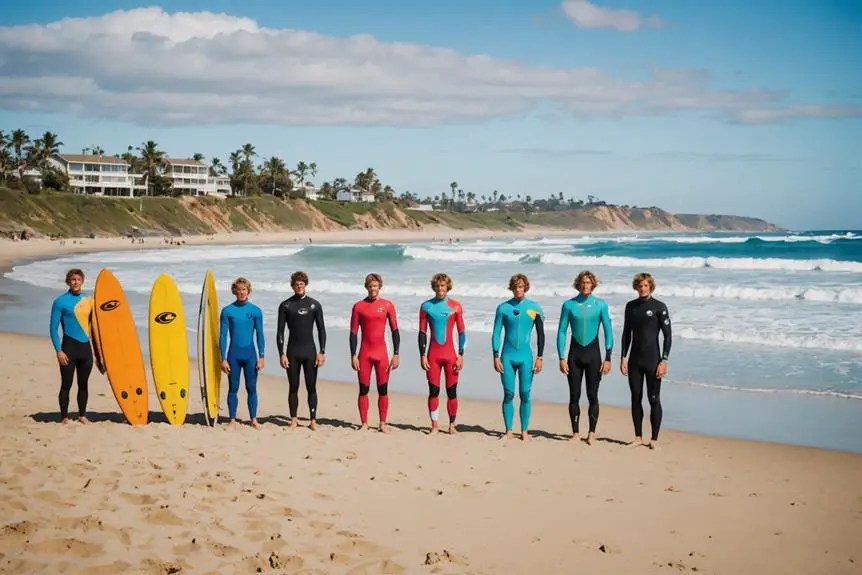
Surf culture has undergone a remarkable transformation since its inception, reflecting the evolving attitudes and lifestyles of surfers. In the late 1960s and early 1970s, you'd notice a shift as surfers embraced shorter boards, releasing creativity and freedom in their riding styles. This period also saw the rise of influential brands like Rip Curl, which played a significant role in shaping surfwear and culture the brand's historical significance. The 1973 Rip Curl Pro at Bells Beach marked a pivotal moment, highlighting the competitive nature of surfing and setting the stage for professional surfing culture.
Throughout the 1980s, surf culture exploded with excess, showcasing vibrant beach fashion and a heightened competitive scene. This era mirrored broader societal changes, prompting philosophical debates about surfing's future. Surfers began to emphasize adventure and individual expression, values that resonate deeply today.
In the early 1990s, campaigns like "The Search," spearheaded by figures like Claw Warbrick, championed the essence of adventure and exploration. This movement connected with a new generation of surfers keen to rediscover the thrill of the waves.
- Shorter boards for creativity
- The significance of the Rip Curl Pro
- Vibrant beach fashion and competition
- A renewed focus on adventure
This evolution showcases how surf culture continues to adapt and inspire.
Future Vision and Commitment
Rip Curl's future vision is all about commitment to the surfing community and innovation. You'll find that the brand focuses on advancing surfing culture by fostering grassroots initiatives and supporting local surf communities worldwide. This dedication not only strengthens the sport but also enriches the lives of surfers everywhere.
The company aims to lead the surfing industry in product quality and innovation, ensuring that its offerings meet your evolving needs as a surfer. By prioritizing exceptional customer service, Rip Curl enhances your overall brand experience, making sure you feel valued and understood.
Additionally, the brand continues to host and sponsor top-level surfing competitions, like the WSL World Championship Tour and the GromSearch Series. These events don't just showcase talent; they inspire future generations to embrace the spirit of adventure in surfing.
Rip Curl's strategy emphasizes remaining a dominant force in the surfing industry for years to come. By nurturing the surfing culture and focusing on what truly matters to you, they're dedicated to ensuring that every wave you ride is supported by a brand that understands your passion.
Frequently Asked Questions
What Is the Rip Curl Controversy?
The Rip Curl controversy centers on its acquisition by Kathmandu, raising concerns about brand authenticity. Customers worry that management changes and a focus on mainstream retail compromise the brand's commitment to surfing culture and community values.
Why Did Kathmandu Buy Rip Curl?
Kathmandu bought Rip Curl to strengthen its outdoor lifestyle portfolio, leveraging Rip Curl's strong brand and expertise in surfing. This acquisition aimed to enhance growth, innovation, and market reach for both companies in the outdoor industry.
Is Rip Curl Owned by Billabong?
No, Rip Curl isn't owned by Billabong. It was sold to Kathmandu in October 2019, while Billabong operates under Boardriders Inc. Each brand remains independent, competing in the surf industry separately.
Who Is the CEO of Rip Curl?
You're asking about the CEO of Rip Curl. Since August 16, 2021, Brooke Farris has led the company, focusing on innovation, community engagement, and sustainability while ensuring Rip Curl remains a top surf brand.
